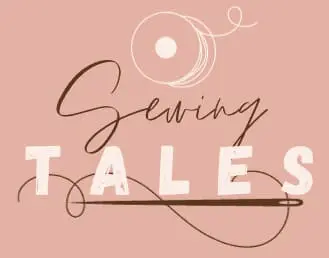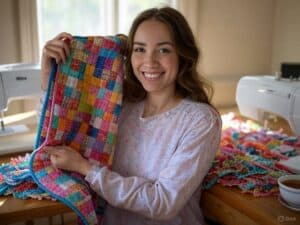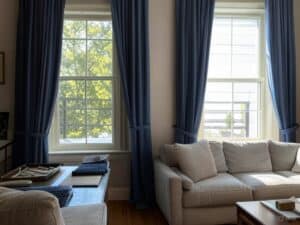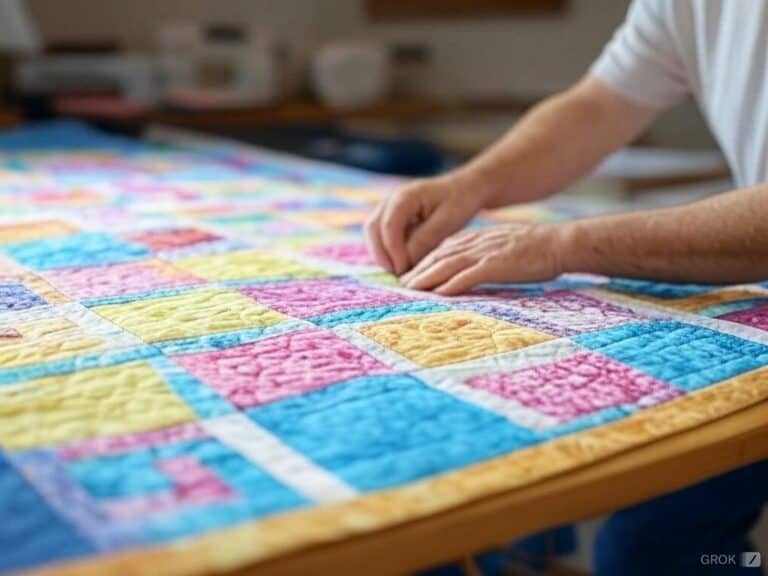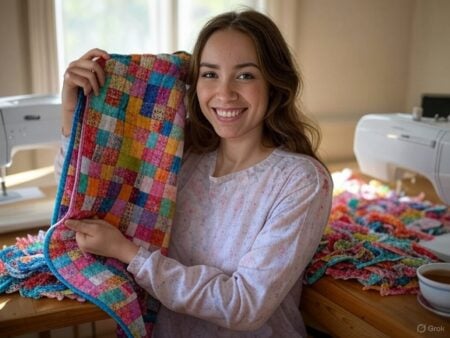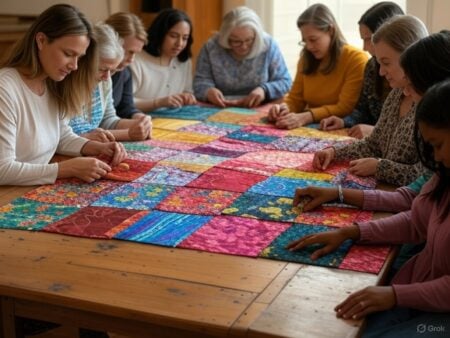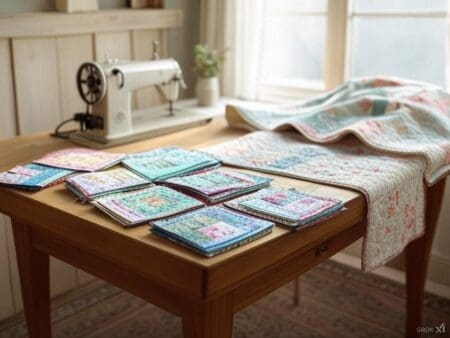When I tried to quilt for the first time, I was quite intimidated by the variety of fabrics, tools, and techniques. It was even quite challenging for me to think about cutting and piecing fabric since I barely knew how to fold a fitted sheet properly. That is until I learned about layer cake quilts, which, by the way, are honestly a complete lifesaver.
For those who have baked a layer cake, or at least eaten a slice, the idea becomes easy to understand: with layer cake, a quilter is provided with fabric squares that are cut and colored in layers, making the whole process nearly amateur-proof. Spoiler alert: now I am obsessed with making quilts.
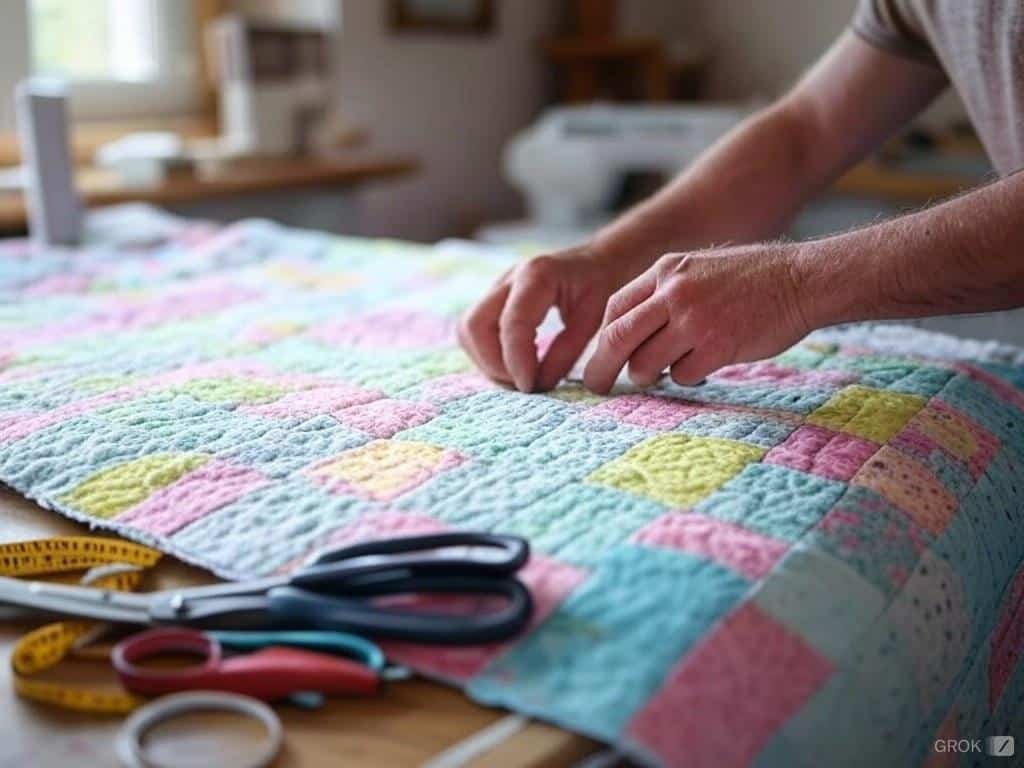
1. My Take on How a Layer Cake Works for Quilters
A layer cake for quilters is like a dessert buffet. It is a stack of cut squares measuring 10 inches by 10 inches cut out from the same material collection. This means the colors and the patterns are already set, and there is no cutting and guessing anymore.
Of these 42 pieces pre-cut from a layer cake, if you use 42 pieces on a normal standard, then you don’t have to do any additional cutting and can start sewing together quilts instantly by arranging and stitching the fabric strips.
2. Why I Recommend Pre-Cut Layer Cakes for Beginners
When I first began to learn how to cut and sew fabrics, my craft pieces always came out very poorly. Another beginner-friendly option is using charm squares, which simplify the process by allowing you to quickly mix and match different fabrics. That all changed when I started using pre-cut layer cakes which cut out all the stress of cutting fabrics.
This is because these cakes are perfectly shaped and you will not have to worry about the size being off or having to spend time cutting them. Moreover, since the colors are already coordinated, it will not resemble a quilt crafted by an overexcited kid. Layer cakes allow you to go straight to the exhilarating bits—sewing and constructing unique designs.
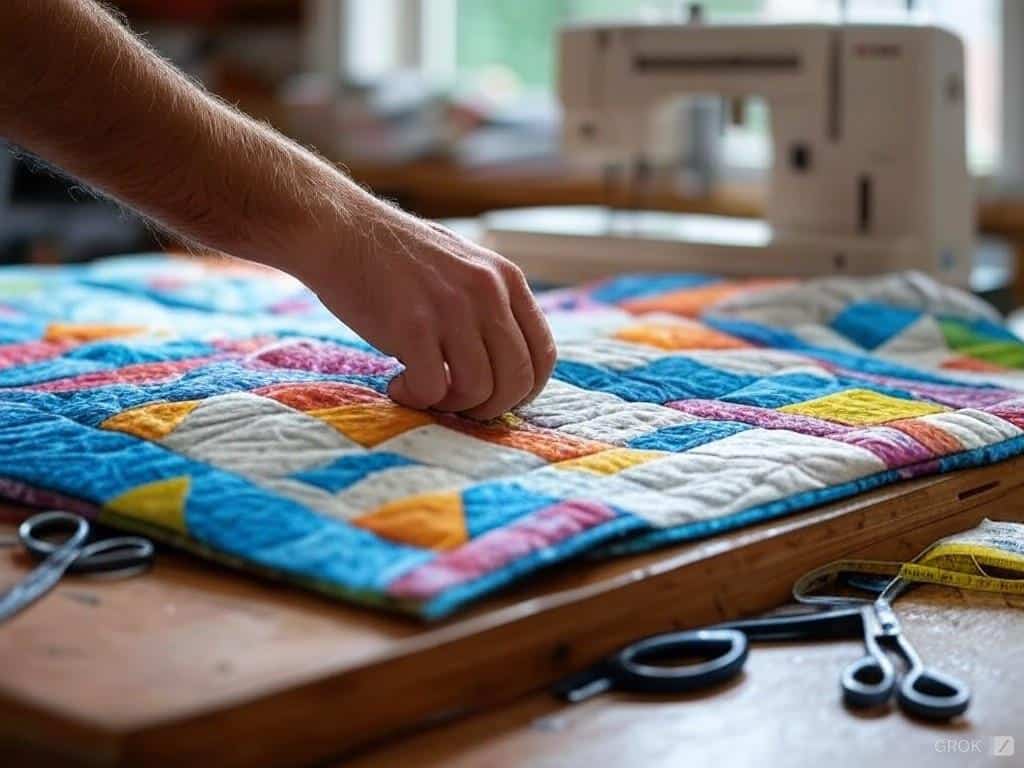
3. What I Needed to Start My Quilting Journey
These are the tools that will assist you tremendously when you embark on the exciting journey of quilting:
Rotary Cutter: Think of a pizza cutter but for fabrics, mine is so sharp that I believe that it can cut through history.
Cutting Mat: Helps keep your table clean and makes sure your rotary cutter stays in good condition.
Ruler: What every perfectionist needs, especially when cutting fabrics as it minimizes the chances of an imperfect cut.
Sewing Machine: Well unless you favor a hand sewing race, a sewing machine is very important.
Thread: Use stronger cotton; cheap string is a catastrophic situation in the works.
Pins or Clips: Use these items to keep your fabric in one place and prevent the fabric from moving about more than a hyper child.
Iron and Ironing Board: From my experience, I would have never expected quilting to require so much ironing but it turns out ironing is indeed a necessity, and it does feel very calming.
Having the right sewing patterns is also crucial, as they guide you through various quilting projects and ensure you use materials and techniques effectively.
4. The Essential Tools and Materials I Rely On
Must-Have Tools
Buying tools that allow for an improvement of comfort while quilting is a great investment. My favorites include:
Rotary Cutter: Mine’s a 45mm blade—perfect for precision.
Cutting Mat: I bought a 24” x 36” mat at first. This is how it feels to have a blank page and to be able to fill it the way you want.
Quilting Ruler: Almost all of the time, my cuts are accurate simply because I used a clear acrylic ruler.
Using these tools helps achieve various quilting patterns, including straight lines, which are essential for a more varied texture and design.
Choosing the Appropriate Layer Cake Fabric Collection
For fabrics, I usually stick to certain prints that fit my style. Recently, I selected a collection I’ve built around: coffee mugs and donuts, which, in my quilting sessions that are a lot caffeine-fueled, is my favorite. Good fabric is good cotton because, unfortunately, cheap fabric burbles faster than my nerves during the tax season. Another popular fabric option is the jelly roll, which offers pre-cut strips that are perfect for creating quick and vibrant quilt designs.
Additional Basic Supplies
Here’s where your sewing machine comes into play– this is your best friend. I have a quarter-inch foot at the end of mine. Do not forget about an iron– if you want a clean-looking quilt, then pressing seams is the magic you need. Additionally, knowing the finished size of your quilt is crucial to ensure your project meets your expectations.
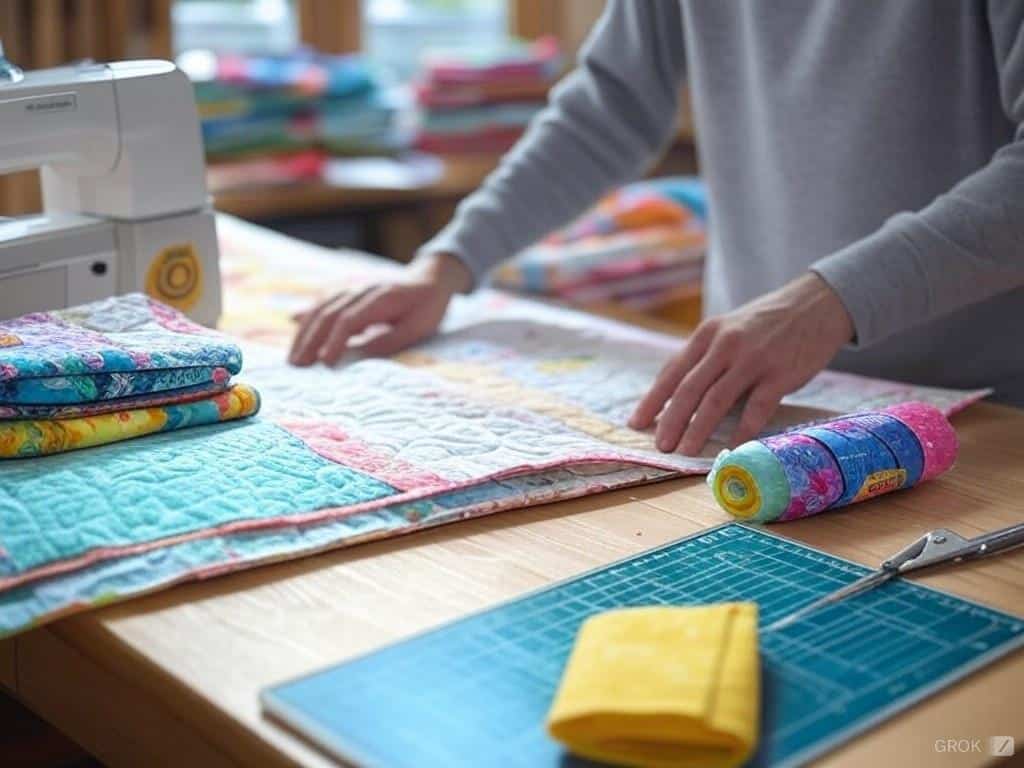
5. The Basic Layer Cake Quilt Patterns I Learned to Love
Layer cake quilt designs are a popular choice among quilters, and for good reason. They offer a wide range of creative possibilities and can be used to create a variety of beautiful quilts. Here are some basic patterns that can be used to create layer cake quilt designs:
Simple Square Patterns
Squares were a basic start. I constructed my first quilt by sewing squares together into a pattern that is simple yet pleasing to the eye. Layer Caking is a style of sewing that many dog owners are adopting as it allows the pet to play on the tiles. The dog does indeed seem to enjoy this new activity.
As I started placing the cakes together and laying them on the ground, it started to amuse me how row by row the quilts were coming together. The result was an adorable quilt that reminded me of the charming designs from Honey Bear Lane.
Easy Half-Square Triangle Designs
When I got more innovative, I decided to experiment with the HST triangle. Drawing a diagonal line across 2 layer pieces and sewing on both sides followed by a cut on the diagonal seemed far too easy now that I look back at it.
The first 3 wonky corners that I was able to sew together and later realized that’s how they were supposed to turn out. Modern quilt designs often incorporate these techniques, offering bold prints and innovative patterns that appeal to contemporary quilters.
Basic Block Arrangements
After mastering the basics, my next step was integrating 9-piece blocks and 4-piece patch blocks into my designs. The combination of HST combined with those particular patch blocks gave the quilts a more playful and dynamic feel. Always make sure to take a picture of your pattern before sewing it together, especially if you have a dog that likes to paw around.
These designs are also suitable for experienced quilters, making them versatile and appealing to a wide range of quilting expertise.
6. My Go-To Techniques for Cutting and Piecing
The best cutting techniques. When working with intricate patterns and designs, the importance of cutting pieces precisely becomes evident. It is wise to limit the number of stacked squares. Over about three so I will have to repeat the measurements.
A mistake of feeling overconfident saw me cut out trapezoids, all I learned is that relying on blind faith is not the way. Precise cutting is crucial to ensure the dimensions of the finished quilt are accurate.
Beginner Piecing Techniques
I’m an enthusiast of chain piecing. It’s more organized and more efficient than normal sewing– and seaming over the machine is like a habit, which is entirely different from wrapping a cornerstone in bubble wrap.
Mastering these techniques can help you create a beautiful quilt that showcases your craftsmanship and attention to detail.
Quilt As You Go (QAYG) Technique
Quilt As You Go (QAYG) is a technique that involves sewing together the quilt top, batting, and backing fabric as you go, rather than waiting until the end of the quilting process. This method is particularly beneficial for beginners as it breaks down the quilting process into more manageable steps.
Helpful Info for Seam Allowances
Get yourself a quarter-inch presser foot for your sewing machine. It’s a revolution as far as consistency is concerned. And don’t forget to press the seams– it’s the unsung hero of quilt making.
In a strip quilt, maintaining accurate seam allowances is crucial for achieving a polished and professional look.
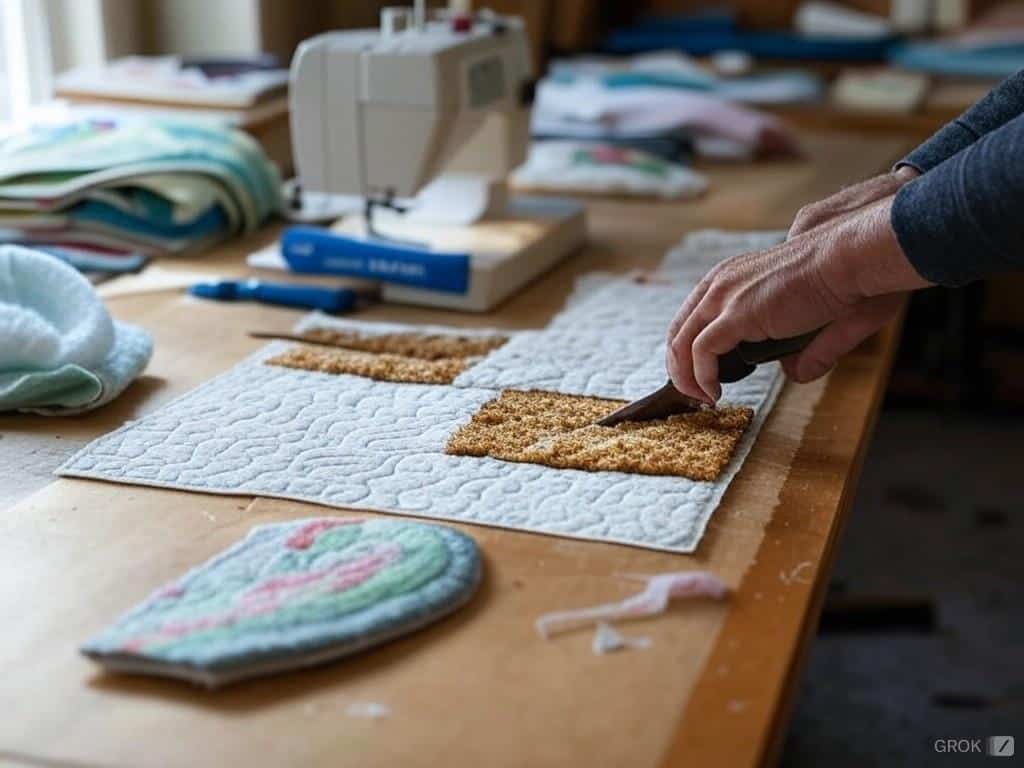
7. The Common Beginner Projects I Started With
Simple Lap Quilts
The first lap quilt I made used a charm pack pattern. I arranged my layer cake squares into a 5×6 grid, attached the squares, and pieced it with a border. It has been my reliable blanket when lounging and watching a movie.
Easy Table Runners
Table runners are the best project for those who need instant gratification. I made one by simplifying the blocks to alternating rectangles and it is now a setting of my dining table. My wife was so enthralled with the outcome that the fact that I burnt the dinner was lost on her.
Baby Quilts for Every Beginner
Baby quilts are one of the most given-out gifts. My most memorable one is a pastel patchwork quilt. I made this quilt for my friend’s baby. I still remember how my friends looked at me with awe– that was worth every stitch.
8. My Troubleshooting Tips for Quilting Success
Blunders You Should Avoid
Incorrect cutting: Measure twice, cut once and most importantly use a board rotary cutter.
Displaces in seams: All this inconsistency can be resolved by using a quarter-inch presser foot.
Inching: Don’t. Pressed seams are the unsung heroes of quilting.
Time Management Skills
Chain Piecing: This eliminates time loss and thread wastage.
Pre-Winding Bobbins: This customizes your workflow.
Organized Workspace: Orderly workspace means high efficiency.
Breaking Barriers as a Beginner
Blocks are not of equal size: Go back to triangulate or cutting or need to perform a square block check.
Tension Control: The working machine can be reset with its setting and threaded again.
Puckered Fabric: Fabric stretching needs to be avoided by utilizing a walking foot.
How Quilting Became My New Obsession
From being just a hobby, quilting has become my new obsession. It’s truly remarkable how a tiny stack of fabric squares can be turned into such a functional beauty. From lap quilts used during cozy movie nights to baby quilts made for special family members, each piece of art is unique, and I can assure you, they are much easier to make than a cake layered piece.
So get your hands on your tools, grab some fabric colors you adore, and start sewing your first quilt. You may never know, it could turn out to be your favorite new hobby. And if not, well, at least on your quilt-making adventure, you’ll be able to make an amazing comforter for those cold nights.
